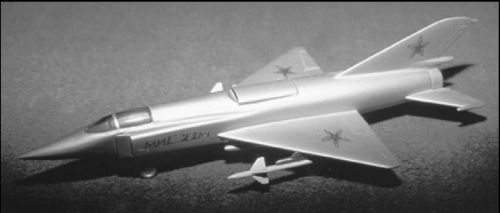Lets send the MiG company on the path not chosen wrt. their 'budget' fighters.
Instead, they make a spin-off of the MiG 19 that has a wing better suited for high speeds (not 8.74% t-t-c at root as on the -19, but under 4.5% as it was case with MiG-21; wing is also of the shorter span), and lateral intakes that leave the nose free for an actual radar set. All of this happens in the second half on 1950s.
By second half of 1960s, they move on 1-engined version of this, but with slant intakes akin to what MiG-25 had for better high AoA abilities.
By late 1970s/early 1980s, engine is RD-33, wing is of modern shape for better low-speed abilities.
How much of an impact this can have on the appeal of these fighters? Commercial success vs. what was it historically so? What for late 1980s/early 1900s?
Instead, they make a spin-off of the MiG 19 that has a wing better suited for high speeds (not 8.74% t-t-c at root as on the -19, but under 4.5% as it was case with MiG-21; wing is also of the shorter span), and lateral intakes that leave the nose free for an actual radar set. All of this happens in the second half on 1950s.
By second half of 1960s, they move on 1-engined version of this, but with slant intakes akin to what MiG-25 had for better high AoA abilities.
By late 1970s/early 1980s, engine is RD-33, wing is of modern shape for better low-speed abilities.
How much of an impact this can have on the appeal of these fighters? Commercial success vs. what was it historically so? What for late 1980s/early 1900s?

